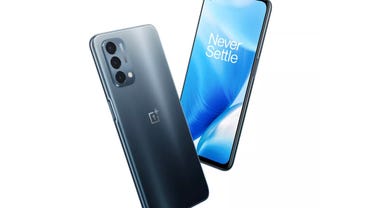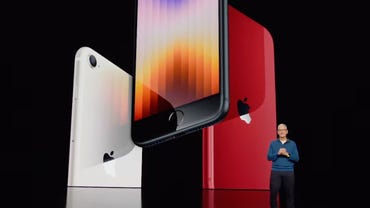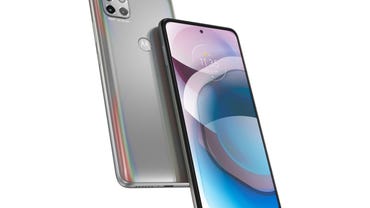Best cheap 5G phone 2022: No need to pay flagship prices | ZDNet
Buying a 5G smartphone on a budget has never been more fun given discounts, steep competition among carriers and Android device makers, but there are trade-offs.
The 5G smartphone sweet spot has typically been between $400 and $700, but there are some cases where you can get a solid device for under the $250 or less. Are there compromises? Sure, the cameras are typically the biggest downgrade from more expensive alternatives, but most of the devices in the mid-range can snap good-enough photos. Recent launches from Google as well as OnePlus highlight how the price-camera gap is closing more and more.
Your first step in buying a 5G device on the cheap is to ponder what you care about (and don’t). If the camera is everything, flagship devices will likely merit more consideration. However, smartphone vendors including Google, Samsung, OnePlus and even Apple are bringing more flagship features down market.
And then there are the discounts and long-term deals to be had. Google’s latest flagship made a splash when it debuted at a sub-$600 pricepoint, while Samsung’s A-series is, more than ever, aimed at the value market, and Apple has finally added 5G support to its ever-popular, budget-friendly iPhone SE line.
Here’s a look at the updated field for almost cheap 5G smartphones and the trade-offs required. We’ve tested most of the Android devices in the budget 5G market, but there are a few Apple devices to ponder too. We’d also recommend using this list as a starter list for brands. For instance, we listed one OnePlus device, but there are more in the category to consider. Likewise, Google’s Pixel models have supported 5G for a few generations, with previous entries offering solid performance for the buyer willing to make the right compromises.
Aggressively priced flagship
![]()
Display: 6.4 inches (2,400 x 1,080-pixel resolution) OLED | CPU: Google Tensor | RAM: 8GB | Internal Storage: 128GB | Rear cameras: 50MP rear f/1.9 and 12MP f/2.2 ultra-wide (114-degree field-of-view) | Front camera: 8MP f/2.0 | Weight: 207g | Dust/water resistance: IP68
The recently launched Google Pixel 6 is a 5G phone that’s priced to compete — starting at $599 for the 128GB storage model. Though 128GB is plenty of space for most users, Google is banking on cloud storage and services like Pixel Pass to bridge the gap for those who are craving more.
For under $600, the Pixel 6 is equipped with a large 6.4-inch 90Hz display, a generous 4,614mAh battery that supports fast and wireless charging, and an upgraded camera system, that when paired with Google’s strong computational photography, will set this phone apart from its competition.
With the Pixel 6 lineup, Google is also committing to three years of Android version updates and five years of security updates. That’s a feat that not many manufacturers will be able to match, let alone in the mid-priced market.
Pros
- High quality and capable camera system
- Stress-free battery life
- Stock Android with little bloatware
- Five years of software updates
Cons
- Large body may be uncomfortable to hold for some
- Lack of expandable storage slot
- No charger in the box
One of the first sub-$300 5G phones worth considering
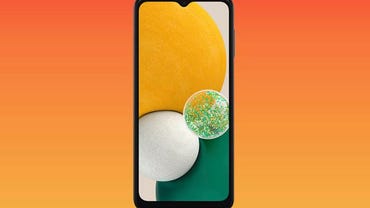
Display: 6.5 inches (720 x 1,600-pixel resolution) 90Hz LCD | CPU: MediaTek Dimensity 700 | RAM: 4GB | Internal Storage: 64GB | Rear cameras: 50MP rear f/1.8 wide, 2MP f/2.4 macro, and 2MP f/2.4 depth | Front camera: 5MP f/2.0 camera | Weight: 195g | Dust/water resistance: none
It wasn’t too long ago that 5G was a feature that could only be had in the best and brightest flagships from the leading smartphone manufacturers. Now, things have reached the point where the latest generation of connectivity is coming to devices that are almost as cheap as phones were back in the halcyon days of carrier subsidized $200 flagships. These aren’t from no-name makers, or from Chinese smartphone brands that may or may not lose access to Google Play at any moment from rising political tensions, either.
The Galaxy A13 is Samsung’s best crack yet at retaining 5G functionality while reaching down into the bargain basement pricing tier. It’s part of the same line as the also-excellent, though quite a bit pricier, A51 on this list. Of course, that price difference shows itself in their respective spec lists, with the worst of the concessions found in the A13 likely being its mediocre CPU, display resolution, and last-gen front-facing camera. Still, if getting into the 5G game is your main goal, and your budget is tight, the A13 provide an shockingly low entry point from one of the most popular smartphone makers in the world.
Pros
- 90Hz refresh rate display offers smoother motion that many more expensive models
- Compatible with both AT&T and T-Mobile 5G networks in the US
- Gorilla Glass 3 display promises a sturdy display
Cons
- No water or dust resistance rating
- Memory is limited to just 4GB of RAM and 64GB of storage
Picks up where Galaxy S20 FE left off
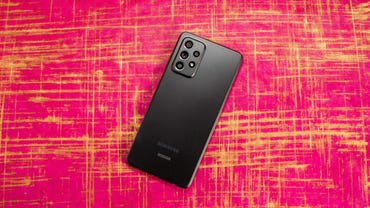
Display: 6.5 inches (2,400 x 1,080-pixel resolution) 120Hz AMOLED | CPU: Qualcomm Snapdragon 750G | RAM: 6GB | Internal Storage: 128GB | Rear cameras: 64MP rear f/1.8 wide, 12MP f/2.2 ultrawide (123-degree field-of-view), 5MP f/2.4 macro, and 5MP f/2.4 depth | Front camera: 32MP f/2.2 camera | Weight: 189g | Dust/water resistance: IP67
There are a lot of phones in Samsung’s Galaxy A range, all with a focus on mid-range and lower pricing. The Galaxy A52 5G is the cream of the current crop — a 5G handset with IP67 certification against dust and water ingress. Then there’s the 6.5-inch screen’s 120Hz refresh rate, that when paired with the dual speakers, makes for an immersive multimedia experience.
ZDNet’s Sandra Vogel gave the device high remarks when first launched, praising the A52 5G for its distinctive design, durability, and accouterment of smartphone perks like a MicroSD card slot and 3.5mm headphone jack. All of this comes at a price to beat at $499.99.
Pros
- Reliable 64MP main camera with OIS
- Immersive 120Hz display
- IP67 rating for dust and water resistance
- Has most, if not all, essential smartphone features
Cons
- Macro camera and depth sensor is unnecessary
- Digital zoom only
A cheap option from a flagship killer
Display: 6.49 inches (2,400 x 1,080-pixel resolution) 90Hz IPS LCD | CPU: Qualcomm Snapdragon 480 | RAM: 4GB | Internal Storage: 64GB | Rear cameras: 13MP rear f/2.2 ultrawide, 2MP f/2.4 macro, and 2MP f/2.4 monochrome| Front camera: 16MP f/2.05 camera | Weight: 189g | Dust/water resistance: none
The OnePlus Nord N200 5G comes from the company’s mid-range Nord line of devices. Although OnePlus first few generations stuck exclusively to the concept of making smartphones that could compete with big-name flagships at mid-range prices, the company’s more recent offerings have grown well into the “premium smartphone” price range. It’s latest flagship, the OnePlus 9, continued this trend by launching at $729, not including the occasional sale that drops it below the $600 mark.
Although the OnePlus 9’s current price puts it out of this list’s purview, the N200 5G comes reasonably close to its hardware specs with the same screen size and resolution (albeit at a lower 90Hz refresh rate), a Qualcomm Snapdragon Series chipset, and a very similar front-facing camera. Some concessions are, of course, included in the lower resolution main rear shooter and the halved RAM and internal storage specs. However, when considering that you could buy a three of these, with some change left over, for the same price as the OnePlus 9, those moderate downgrades might start mattering a lot less.
Pros
- Cheapest option on the list
- Same screen resolution as much pricier flagships
- Side-mounted fingerprint sensor is built into power button for fast unlocks
Cons
- Rear camera array won’t win any awards
- No mmWave 5G support
A sub-$500, 5G iPhone with one compromise
Display: 4.7 inches (1,334 x 750-pixel resolution) LCD | CPU: A15 Bionic chip | RAM: 3GB | Internal Storage: 64GB/128GB/256GB | Rear camera: 12MP rear f/1.8 wide | Front camera: 7MP f/2.2 camera | Weight: 144g | Dust/water resistance: IP67
Apple was arguably a bit late to the 5G game, at least compared to some of its Android counterparts. While it’s been a couple years since the company introduced the latest networking protocol to its flagship line, it’s only now brought the technology to its more budget-friendly iPhone SE line with the device’s third edition. The smartphone’s $420 starting price makes it easily the cheapest 5G option for iPhone fans. However, as we’ve covered previously, the third-gen iPhone SE does not support mmWave 5G services, nor does it support the 3.45GHz band that AT&T plans to use for its future 5G proliferation.
This means that the top-end speeds users can experience will be limited significantly if they are in areas where the only 5G available is of the mmWave of 3.45GHz variety. That said, the iPhone SE does support other C-Band-based 5G services on Verizon and T-Mobile, meaning it still has the chance to experience ample speed increases, when compared to its LTE-only predecessor. The reduced cost of the latest iPhone SE does come with the potential FOMO iPhone 12 and iPhone 13 owners could avoid. But, the extra money in your pocket may be more than enough of a benefit to ignore the potentially moot issue of 5G band support.
Pros
- A 5G iPhone for under $500
- Same chip as Apple’s latest flagships for a fraction of the price
- Home button access to TouchID remains preferable to FaceID for some
- Seamless integration within the Apple ecosystem
Cons
- Doesn’t support some of the fastest 5G bands
- No telephoto camera
‘Smallest, lightest 5G phone’

Display: 5.4 inches (2,340 x 1,080-pixel resolution) OLED | CPU: A14/15 Bionic chip | RAM: 4GB | Internal Storage: 64GB/128GB/256GB/512GB | Rear cameras: 12MP rear f/1.6 wide and 12MP f/2.4 ultrawide (120-degree field-of-view)| Front camera: 12MP f/2.2 camera | Weight: 135/141g | Dust/water resistance: IP68
The Apple iPhone 12 mini and iPhone 13 mini take the last spot on our list for offering the best of Apple in compact and 5G-ready packages. Both iPhones sport a 5.4-inch screen and weigh in at 135g and 141g, respectively, making them some of the most ergonomic smartphones on the market.
Even though the devices are just the opening act for its larger siblings, the iPhone 12 and 13 mini make for great 5G value, especially with the former getting a price discount thanks to the release of the latter. If you reminisce the smaller iPhone days and buying on a budget, the iPhone 12 mini starts at $599 for the 64GB model. For twice the storage, the latest A15 Bionic chip, and upgraded cameras, the iPhone 13 mini starts at $699.
Pros
- Arguably the most compact phones in the market
- Industry-leading software support
- Reliable cameras
- Seamless integration within the Apple ecosystem
Cons
- Subpar battery life
- No telephoto camera
Stock Android, with the latest updates
Display: 6.34 inches (2,400 x 1,080-pixel resolution) OLED | CPU: Snapdragon 765G | RAM: 6GB | Internal Storage: 128GB | Rear cameras: 12.2MP rear f/1.7 wide and 16MP f/2.2 ultrawide (119-degree field-of-view)| Front camera: 8MP f/2.0 camera | Weight: 183g | Dust/water resistance: IP67
Starting at $450-$480, depending on price fluxuations and promotions, the Pixel 5a 5G enters the budget device fray with a few unique advantages. ZDNet’s Jason Cipriani touted the phone as “the best of Pixel for less”, citing its excellent battery life, stock Android experience, and reliable cadence of software updates. While the Pixel 5a 5G isn’t the latest and greatest offering by Google — that would be the Pixel 6 and 6 Pro — the device is still a great value offering for those looking to get their hands on 5G.
From a hardware perspective, the Pixel 5a 5G fields a large, yet comfortable, 6.34-inch OLED display with a body design that we’ve become accustomed to when talking Pixel. A large 4,680mAh battery, Qualcomm Snapdragon 765G processor, and stock Android make for a clean and minimal smartphone experience that should comfortably last you a day and some more.
Pros
- Bloat-free stock Android
- Excellent software support
- Day-long battery life
- Reliable cameras
Cons
- Recycled design
- No 5G mmWave support
Good value, 6.7-inch display
Display: 6.7 inches (2,400 x 1,080-pixel resolution) LCD | CPU: Snapdragon 750G | RAM: 6GB | Internal Storage: 128GB | Rear cameras: 48MP rear f/1.7 wide, 8MP f/2.2 ultrawide, and 2MP f/2.4 macro| Front camera: 16MP f/2.2 camera | Weight: 212g | Dust/water resistance: N/A
Motorola One 5G Ace builds on the Motorola One 5G with an original MSRP of just under $400. You can even find ones going for less than $300 right now. Motorola, owned by Lenovo, has a full range of value devices, but this mid-range smartphone is compelling.
Simply put, it’s a good value for the money and the 6.7-inch display feels good in one hand. The camera system — three cameras on the back and a selfie in the front — is solid in my tests. There are some areas where Motorola cut corners, from the plastic backing to the lack of a certified water and dust resistance rating, but overall, the device feels like a flagship at a fraction of the cost.
One key item here is that the Motorola One 5G has 6GB of memory with 128GB of storage and microSD card support of up to 1TB. Typically, budget phones scrimp on storage and memory. The microSD card support in Motorola One 5G Ace allows you to bulk up a bit if necessary.
Motorola’s approach to Android rhymes with Google’s stock version of the operating system. A 48MP camera and a solid display round out the Motorola One 5G Ace perks, and for its price, the device makes for solid everyday smartphone.
Pros
- Superb battery life
- Smooth 90Hz display
- Competitively priced among 5G budget phones
Cons
- Screen isn’t bright in sunlight
- Lack of water and dust resistance rating
- Vibration motors aren’t the best
How did we choose these cheap 5G smartphones?
The process to make our smartphone selections includes testing the phones for weeks, reading reviews from other websites and publications, researching reviewer guides and manufacturer websites, talking with colleagues and other users who have hands-on experience with the smartphones, and then selecting the best from all of the available choices.
Over the past year, we tested phones from Google, Samsung, Apple, OnePlus, and several others. As newer models are released, we spend a diligent amount of time testing, analyzing, and comparing devices to the competition and their predecessors.
Should I upgrade to a 5G phone?
While 5G integration has been through years of making, the adaptation of the latest cellular network is still in development, with many areas in the world lacking the antennas to support it. That said, there is no downside to not buying a phone that is 5G compatible right now, especially if you plan on using it for the next three or more years. The availability of 5G compatible phones is more extensive than ever (as this list proves) and the chances of your next phone supporting the network are high.
Check the 5G availability in your area below:
It’s important to know that you must be enrolled in a 5G data plan with your local carrier, whether it’s T-Mobile, AT&T, or Verizon, in order to take advantage of the faster speeds. ZDNet’s Jason Cipriani has compiled a helpful list comparing the 5G data plans from all major carriers in the US.
For all the latest Technology News Click Here
For the latest news and updates, follow us on Google News.

